Sunday Q&A
Welcome to the first edition proper of our Sunday Q&A. After introducing the feature last week it's now time to serve you the first dose of answers.

Anonymous: In the Huawei Mate 9 review you didn't mention anything about the temperature of kirin 960. In your Xioami Mi 5s Plus review you really were satisfied with SD821 and Xiaomi for keeping the temperature down - how would you compare these two?
And also on charging, is Huawei’s SuperCharge more like Dash charge where the phone won't heat up or more like Quick Charge?
The Huawei Mate 9 does a tremendous job of keeping cool even when exposed to prolonged stress. We rarely felt the Kirin 960 get warm even when running benchmarks – that metal body probably also helps dissipate heat.
As for charging – the SuperCharge is basically a rebranded VOOC or Dash, so once again no issues with heat – it uses high current at low voltage and the phone doesn’t heat up at all.
Katherine: Which has a better camera- Lenovo P2 or Xiaomi Redmi Note 4?
Since everyone has their own opinion on what exactly makes a camera good we’d like to just point you towards our photo quality comparison tool, where you can do all the pixel peeping you want and draw your own conclusions. We have a similar tool for video – don’t forget to check that one as well.
Tomas: I just wondered if, when testing Galaxy S7 edge battery life on Android 7.0, you used a brand new phone as the per the original review?
Or was it on a phone that had been used over the past year or so? If it was done on a phone that has had a lot of charge cycles it could explain the measured lower battery life.
It’s a valid concern Tom – we did indeed use the same phone that we used for the original review. However, the phone has only been powered on for a few weeks since then – just used for a few VS articles and shootouts and hasn’t served as anyone’s daily driver. That’s why its battery capacity hasn’t been affected in any significant way and the measured differences have more to do with the way new OS handles the tasks included.
Ernesto Burke: I am only able to see new and blog with a month period now rather than able to see all your old posts. I drag down but cannot see post like maybe December. Can you fix that or tell me how I can see older posts? Thank you!
By expanding the sandwich menu in the upper left corner of our site (on the left of our logo), you can access our news and blog sections where you can browse all our articles since the site came into existence.

Pedram: I wanted to know if there is a way to have a list of all phones with one common feature? For example I want to see a list of all available phones with AMOLED display. Is there any way to have such a list?
By using our Phone Finder you can filter our extensive database by a number of criteria, including things like display type. Unfortunately list length is limited to 70 so for a feature as common as an OLED screen you can only see the top 70 by your selected criteria – Popularity, Price, Weight, Camera resolution or Battery capacity.
Mir: Is switching from Samsung Galaxy S7 to Samsung Galaxy A7(2017), a wise decision?
If you really need a large screen, you might like the Galaxy A7 (2017)’s much roomier 5.7” screen. It should also have the upper hand in terms of battery life although we are yet to review it and confirm for sure. Finally there’s the selfie camera, which on paper is the best of any Samsung smartphone.
Yet the Galaxy S7 has the upper hand in some arguably more important aspects - primary camera, chipset performance and screen resolution. It also already got its Nougat update, whereas the A7 (2017) will have to wait a while longer. So at the end of the day it’s all down to your priorities, and of course the pricing of the two handsets in your market.
Sami: Are you going to release a GSM Arena app for Android in the future?
While many popular websites chose to create mobile apps, we feel that a mobile version, which supports all popular platforms is a better way to go about things. That way it is easier for us to implement new features and there aren’t arguments over who got what version first. The fact that the mobile version is already more popular than our desktop site suggests that it’s going down well with you guys, too.
That said we aren’t saying never. If we figure out a way to make a mobile app so it delivers more value to our readers we’ll of course release one. At this point though it would just be a repackaged mobile version and we really don’t see any point in wasting resources for that.
Ashok: What is the battery life of the Xiaomi Mi 5 for a moderate to heavy user (checking emails and YouTube for 2.5 hrs, watching a movie daily, calling about 1 hour)?
We’ve got a neat battery life table over here, which contains the results of all the phones we’ve ever tested. The sliders on top let you customize your usage pattern so all the numbers are more relevant to you. So inputting the numbers you gave us, you could expect to go about 54h between charges on the Mi 5. That is of course if the phone is seeing no usage outside of those 2h for video, 2.5h for browsing and 1h of calls. Keep in mind that display brightness and how often you wake up your display to check the time or other minor tasks are also important, but once you’ve set your usage pattern you can at least get an idea how long different phones will last compared to one another.
Ray: Going through the GSMArena articles on new and upcoming smartphones, I feel that smartphone companies do not want consumers to continue using the same device for many years. For example, earlier models of smartphones used to have batteries that were replaceable but it is not so in many popular brands now.
Another example would be that of smartphone companies offering updated software on recent smartphone portfolio, motivating customers to switch to new phones if they want to use the newer version of mobile OS. Is it true that smartphone companies are moving in this strategy driven direction?
Naturally smartphone makers would love to see users change their smartphones as frequent as possible. After all selling more phones is what generates the revenues and profits and if everyone uses their phone for half a decade the market in general will shrink and all participants will suffer. Less sales mean less money for R&D, which in turn brings fewer exciting technologies and that leads to even fewer reasons to upgrade.
That said, the two examples you’ve given have more to do with market trends than some manufacturer conspiracy that aims to make everyone give up the phones prematurely. A replaceable battery simply requires more space and with everyone looking to make their smartphones as slim and compact as possible it’s no longer seen as a reasonable trade-off. First you need removable elements – be it a panel on the back or the whole back and second you need to use Li-Ion batteries as Li-Po ones can’t be freely disconnected and reconnected. However, Li-Ion power cells aren’t as flexible when it comes to shape so it’s much harder to make use of all available space to maximize battery capacity.
As for software upgrades – there are several parts to the story. The first is that newer platform releases simply run better on newer hardware so it’s easier for manufacturers to optimize them and release updates for more recent devices than for older ones. There’s also the fact that as a phone ages there are fewer and fewer people using it and it makes less sense for manufacturers to keep updating it, instead choosing to relocate their resources completely at some point.
Of course the whole thing is much more complicated than that and we’ll probably be coming back to it repeatedly with this Q&A, but we hope this is enough as a start of the debate.
If you have any questions for us - you can send them by using the form over here.
Related
Reader comments
- AnonD-96820
- 19 Mar 2017
- HI1
Thanks for answers especially about mate 9
- coralicious
- 14 Feb 2017
- 3PL
Just a reminder: if you want your questions to reach the editors, you need to ask them over here - http://www.gsmarena.com/askus.php3 :)
- Anonymous
- 14 Feb 2017
- mwm
Yes, fully agree. Thumbs up! I wish all apps that rely on the internet became online version like in Chrome OS and Firefox OS. Only apps that do not need the Internet should be locally installed apps (e.g. calculator).



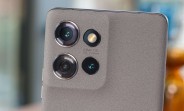



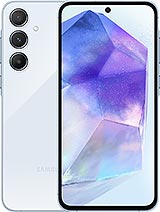 Samsung
Samsung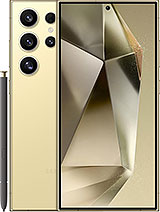 Samsung
Samsung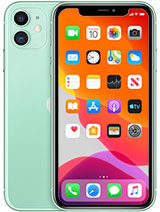 Apple
Apple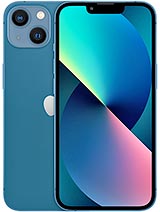 Apple
Apple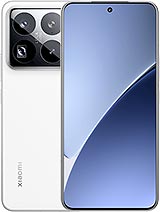 Xiaomi
Xiaomi


